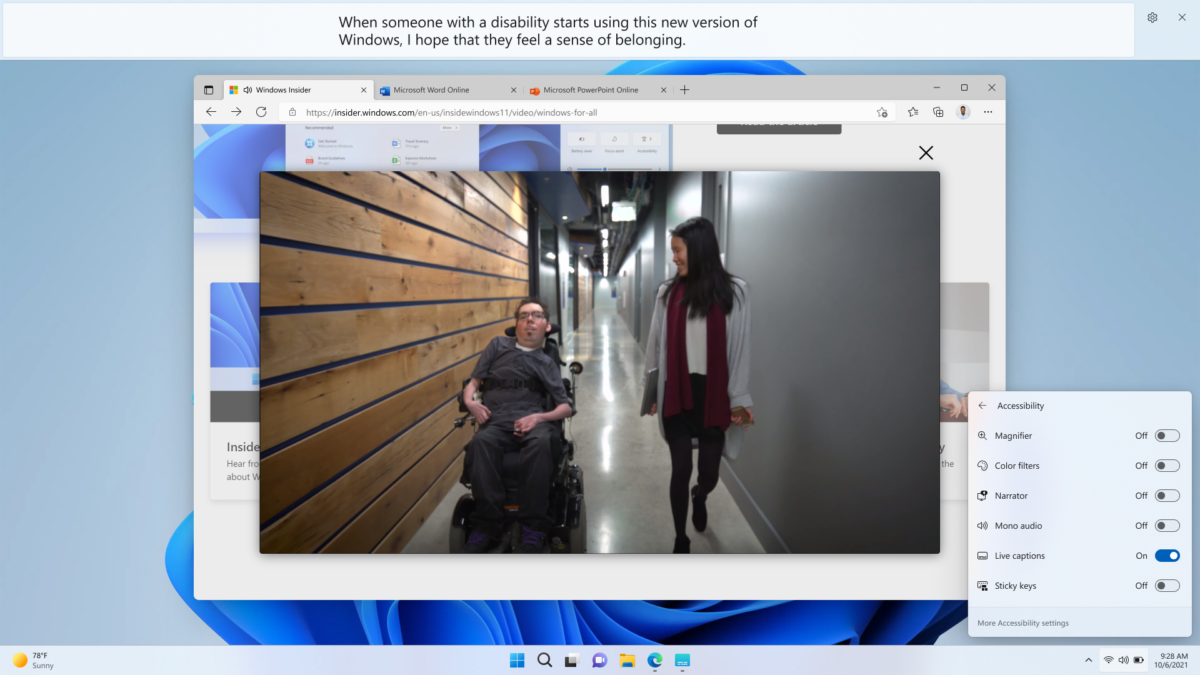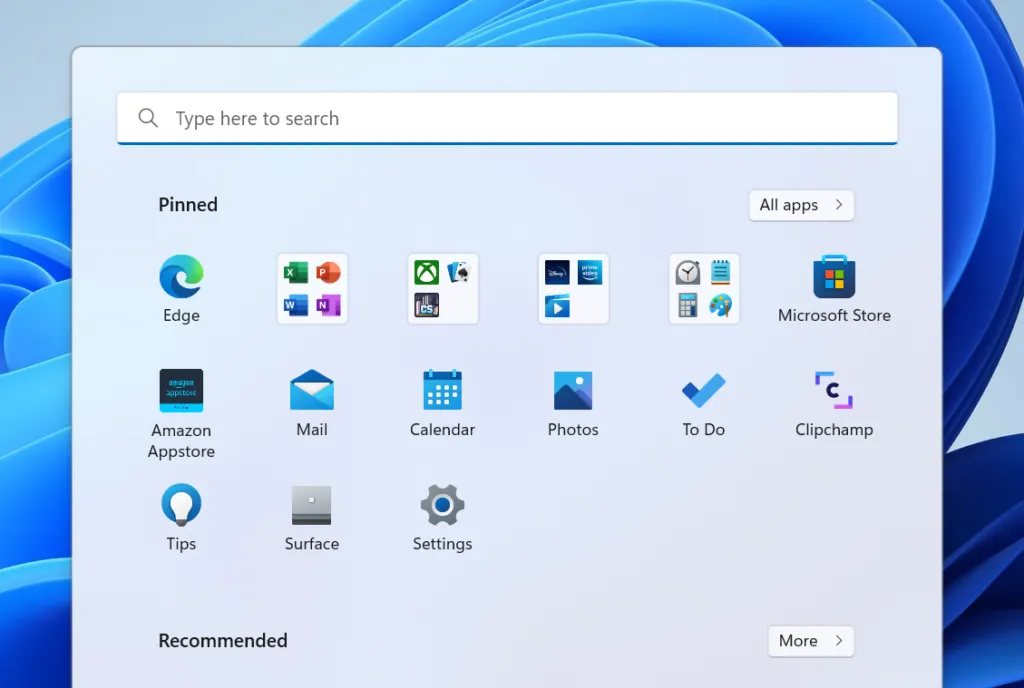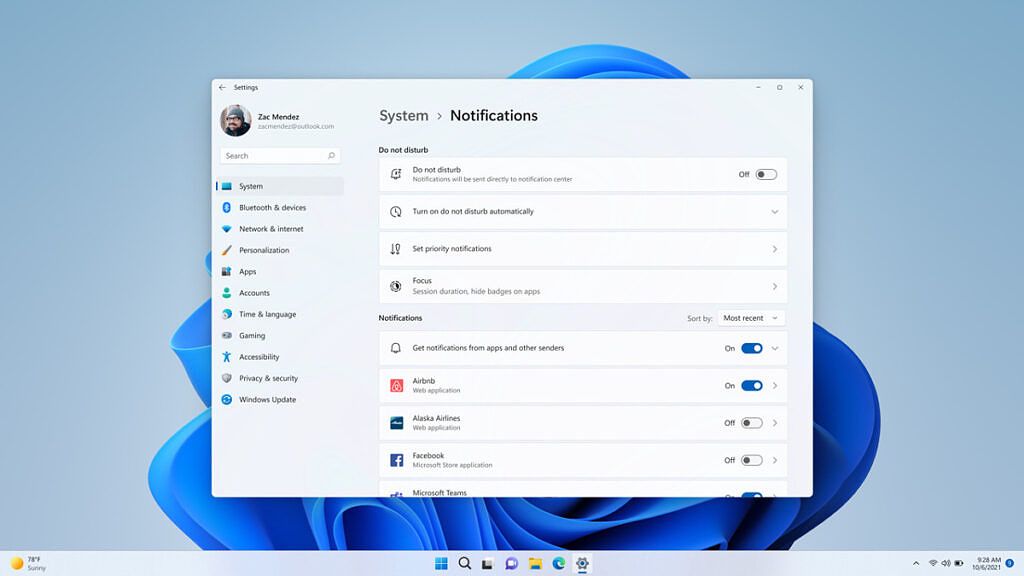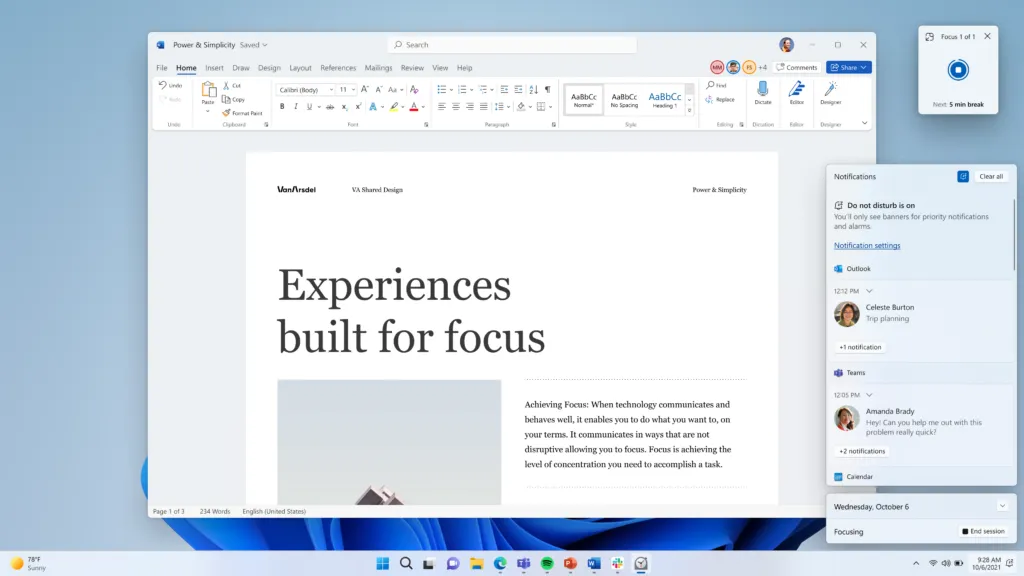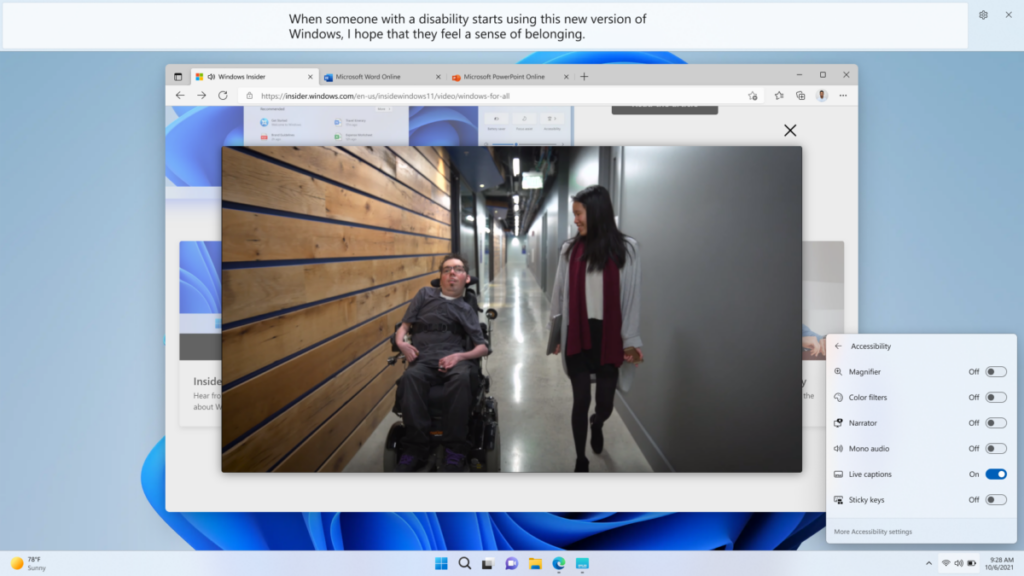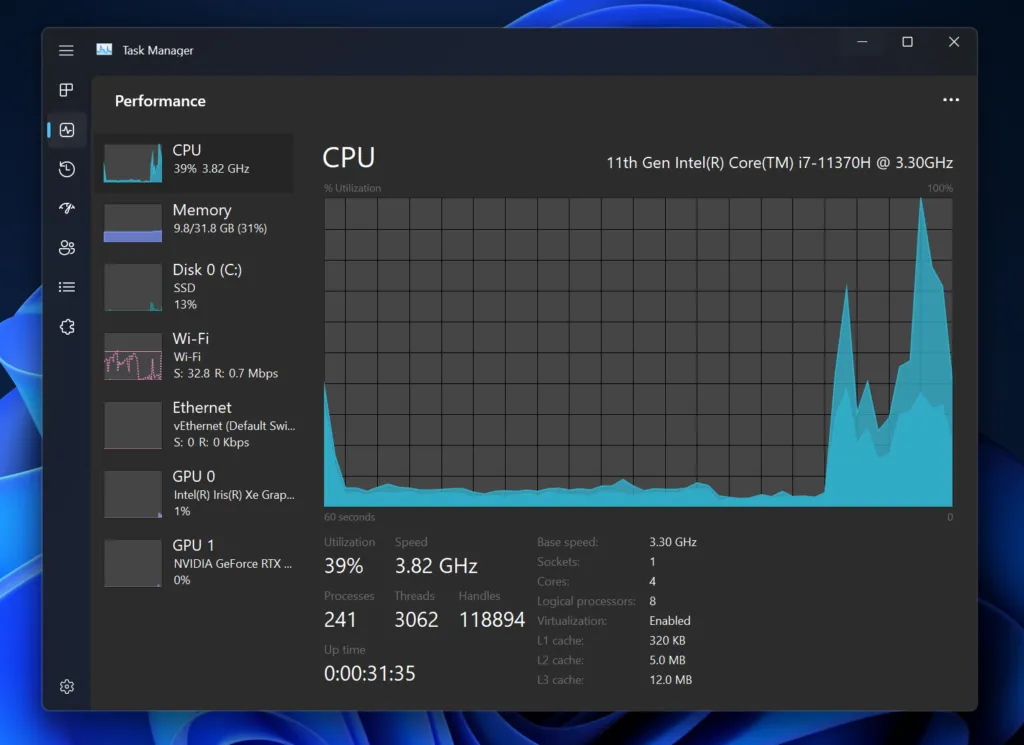After two weeks without a new build, Windows Insiders can look forward to Windows 11 build 22557 today. With a whole two weeks since the last release, there's quite a bit that's new in this build. It's one of the most feature-packed builds yet, with improvements to the Start menu, touch navigation for tablets, and much more.
One of the big new changes is the ability to create folders in the Start menu. You can now drag and drop an app's icon over another to create a new folder, making it easier to have multiple apps available at a glance on the pinned apps list without scrolling through pages or going to the apps list. This was a feature with live tiles on Windows 10, but Windows 11 didn't have it initially, so it's a welcome feature to see come back.
One of the biggest features, especially if you're a tablet or convertible user, is the new touch gestures. Microsoft has added new touch gestures that make Windows 11 far more suitable for this kind of device, which is something that's been missing from Windows for a long time. These include swiping up from the middle of the taskbar to open the Start menu (and swiping down to close it), and in the Start menu itself, you can swipe right over the Pinned app area to see your All Apps list, or swipe right from the Recommended area to see the "More" page. You can swipe up from the notification area to open the Quick Settings panel (swipe down to dismiss it).
Additionally, Microsoft has updated the animation for swiping in from the right to see the Notification Center, so now it follows your finger as you swipe, instead of opening at a fixed speed. Additionally there's now a "full-screen gripper". If you swipe in from the sides of the screen accidentally while running a full-screen app, you'll now see a small gripper so you can swipe in again to open the Notification Center. This way, you won't accidentally cover up the app you're using.
Windows 11 build 22557 also comes with a new Do not disturb feature, which appears to be the new name for what Microsoft called Focus assist. When you turn on Do not disturb, notifications will be silenced and you won't see them pop up on the screen anymore. You can still see your notifications in the Notification Center, though. You can set rules for Do not disturb to kick in automatically, pretty much like Focus assist.
However, Microsoft also has a new feature simply called Focus, and it's kind of a merger of focus sessions in the Clock app with Do not disturb. With Focus, you can start a focus session at any time from the Notification Center, set a timer, and get started. When Focus is enabled, you'll see a timer on screen, Do not disturb will be enabled, and notification badges for taskbar apps will be disabled. Apps won't be allowed to flash on the taskbar, either. Because it integrates with the Focus sessions feature of the Clock app, you can also play music that helps you focus and access tasks from your to-do lists on Microsoft To Do.
Another new feature in Windows 11 build 22557 is Live Captions, which is pretty much the same thing you already know from Android and some Google apps. When you play any content with audio, Windows 11 will use on-device speech-to-text technology to transcribe the audio into text, so those with hearing impairments can more easily follow along without relying on pre-made captions that may or may not be available. Live Captions are only available in English (US) for now.
File Explorer is also getting a couple of big improvements with this build. First off, the Quick Access page now allows you to pin files to the top of the Recent files list so you can always find important documents quickly. If you use OneDrive, you can also now see how much space you have available on your cloud profile right within File Explorer.
Yet another big improvement in Windows 11 build 22557 is related to snap layouts. Now, you can drag a window near the top of the screen to see various Snap Layouts available, so you can easily choose the layout you want and where you want the current window to go in that layout. Then, snap assist lets you finish setting up the layout easily.
[video width="850" height="566" mp4="https://static1.xdaimages.com/wordpress/wp-content/uploads/2022/02/Windows-11-new-Snap-Layouts-UI.mp4"]
There's also a new Task Manager in this build, which some users had discovered in previous builds a few weeks ago. This new Task manager supports dark mode and has a new design that follows the Windows 11 design language a lot better. The Task Manager also has a new efficiency mode, which forces apps to use less power, so you can favor performance in other apps or save battery power, for example.
On that note, the power settings page in the Settings app have been tweaked so the default timers for sleep and screen-off settings are different in order to lower energy consumption. However, those settings won't change if you're just upgrading to this build, only for those who clean install it. Additionally, this page will now make recommendations to change certain settings in order to save power. For example, if you have disabled the screen-off timer (so the screen is always on), you'll be prompted to re-enable it.
Finally, this build includes some improvements to how Narrator works with Microsoft Edge so reading and navigating web pages is more natural and efficient. There's also a new PowerShell module that lets you provision language features for Windows 11.
Aside from all that, Windows 11 build 22557 comes with a ton of smaller improvements. We've rounded up some highlights below:
- You can now drag and drop content to apps on the taskbar (a feature that oddly was removed in Windows 11's original release).
- When sharing a window in Microsoft Teams (work or school), you'll now see a taskbar indicator for the window that's being shared.
- PCs that have more than one color profile can now switch between them with a new action in the Quick Settings panel.
- When casting to a wireless display, you'll now see a cast icon on the taskbar's notification area.
- The charging icon has been updated to use a lightning bolt icon instead of a cable icon.
- File Explorer now shows previews of files inside folders.
- If you share a file to Outlook from File Explorer, you can now compose a message directly in a small pop-up window without opening the Outlook app (requires Outlook desktop app and Outlook Desktop Integration).
- Searching for apps and settings in the Windows search box is now faster and more accurate.
- In the Alt + Tab task switcher, Snap Groups are now displayed with your desktop background behind them to make them easier to identify.
- The transition when moving a snapped app to a different position is now smoother.
- The transition when rotating your display is faster and smoother (for tablets and convertibles).
- Mica is now being used in more places, including the Run dialog.
- Windows 11 Pro now also requires an internet connection and Microsoft account to set up, similar to Windows 11 Home.
Finally, Windows 11 build 22557 has a ton of fixes, which are far too many to list in raw text. You can see them below if you're interested:
There are still some known issues in this release, too, which are always worth looking into before jumping in. A major known issue is that this build simply isn't available for ARM64 PCs due to some problems. If you have a device like the Surface Pro X, you'll have to wait a while longer for these features. The other issues are listed below:
One other thing that Microsoft noted for this build is that it's now coming from a new development branch called ni_release. This has no influence on the features you'll receive in each build, though, and Microsoft actually warned that it will stop mentioning these changes in future blog posts for new builds.
If you want to try all these features, check out how to join the Windows Insider Program and how channels work. If not, Windows 11 got new features for non-insiders earlier this week, too, including support for Android apps.

